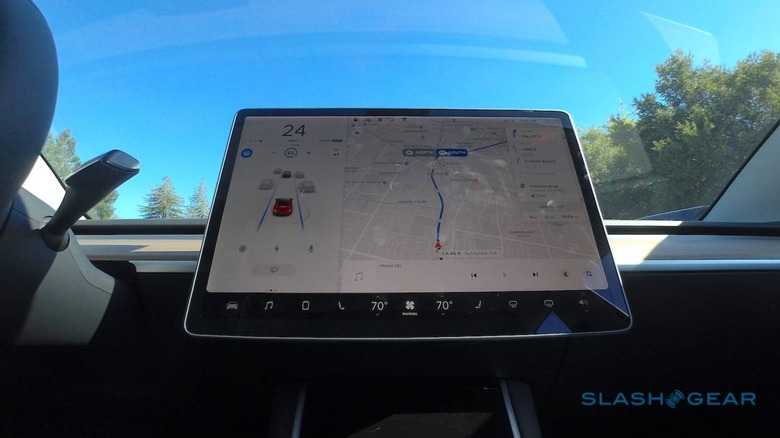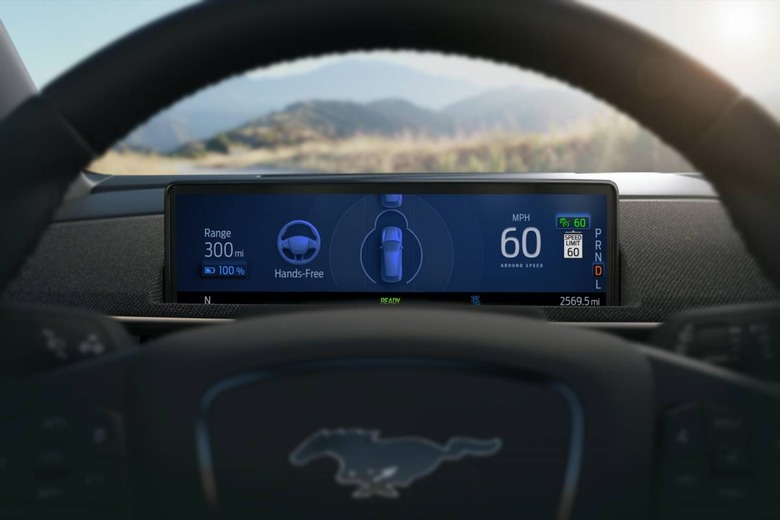Hands-On, Hands-Off: Ford's New Driver Assist Tech Is In Rare Company
Ford's Mustang Mach-E electric crossover will join a very exclusive club of vehicles with hands-free driver assistance, still far from full autonomy but nonetheless promising a more relaxed driving experience – if the conditions are right. Though the 2021 Mustang Mach-E is on track to begin deliveries later this year, the newly-announced Ford Active Drive Assist system won't actually be available until late 2021. However confusion around the system is already cropping up now.
Despite repeated claims, often from people who should know better, there are no autonomous vehicles on sale to consumers today. Autonomy, or full self-driving, is typically acknowledged to mean Level 4 or Level 5 on the SAE scale, where a vehicle can operate itself with no monitoring from humans inside.
What's commercially available now, though, is effectively variations on Level 2 on that scale. The car takes control over acceleration, braking, and steering, but must be monitored by the human at the wheel who is ready to step in at any point. Level 3 would allow the driver to stop paying attention – whether playing on their phone or watching a movie – in situations where the vehicle was in control, but so far we're yet to see it actually arrive in a production vehicle you can buy.

The confusion around Level 2 driver-assistance systems – also often known as ADAS, or Advanced Driver-Assistance Systems – typically arises when it comes to how that human supervision is judged. Most vehicles offering the technology, including Tesla Autopilot, rely on contact with the steering wheel to indicate the driver is poised and ready to take over.
The majority of wheel-contact based attention tracking looks to small amounts of torque – effectively slight turning of the wheel – to confirm that at least one hand is resting on the wheel and ready to steer. Less common are touch-sensors, which typically use capacitive technology to track contact without actual torque being applied. Mercedes, for example, is using that system in its new steering wheel design on the latest E-Class.
The alternative – and far less common – focusses on tracking where the human driver is actually paying attention. Such systems rely on cameras to monitor things like gaze and head position. If the driver is deemed to be attentive to what's going on around them, then they don't need to have a hand on the wheel to satisfy the ADAS.
In reality, there are only a small handful of systems which allow for hands-free driving in production vehicles. Probably the best known is Cadillac Super Cruise, which has been offered on the CT6 luxury sedan for the past few years. Building on adaptive cruise control, it allows drivers to take their hands off the wheel on divided highways in the US and Canada, and is set to spread to the new Escalade, CT4, and CT5 models, as well as other brands under General Motors' umbrella.
Lesser known is BMW's Extended Traffic Jam Assistant. That also has a camera mounted just ahead of the driver, as with Super Cruise, which tracks attention. However where Cadillac's ADAS is designed to operate at highway speeds, BMW's focus is low-speed congestion.
That means limited-access highways still, on which it's easier to predict where other vehicles may be entering and exiting the flow of traffic, but only at speeds up to around 37 mph. If you're stuck in a jam, with low-speed highway traffic, BMW's system allows you to take your hands off the wheel as it keeps pace with the surrounding cars and keeps your own in its lane.
There are plenty of other adaptive cruise control systems with lane-keeping, but they all demand hands-on monitoring. Ford's Active Drive Assist will buck that trend, using an infrared camera ahead of the driver to make sure they're paying attention. Like Cadillac's system it'll work across a range of highway speeds, not just in low-speed congestion.
Hands-free does often come with some compromises, however. Super Cruise is only just gaining the ability to change lanes, something hands-on-wheel systems from Tesla, Mercedes, and others have been able to do for some time now. Even then, Cadillac's version of the feature won't be available on existing CT6 cars, only its next-generation Super Cruise-enabled models.
Ford's system won't support automatic lane-changes either, though the automaker is leaving the path open to such functionality in the future. Every system in the Mustang Mach-E is designed to support over-the-air (OTA) updates, the company says, which could eventually add things like auto lane-change as well as other improvements.

That OTA system is also necessary should Active Drive Assist want to expand. As with Cadillac's system, Ford relies on pre-mapped highways for its ADAS to operate. At launch, Ford claims, it'll work on over 100,000 miles of divided, limited-access highway in the US and Canada.
If that number is to increase, though, Ford will have to map more roads. The automaker says that's on the cards, as new highways are constructed or existing routes are altered over time. Then, as with Cadillac's system, that new data will be delivered to the vehicle and suddenly there'll be more places where the hands-free ADAS can be activated.
While adaptive cruise control and lane-keeping aren't exactly new technologies, we're still in the fledgling days of advanced driver assistance. Several automakers are promising more capable systems on models over the next few years, but we're still clearly some time away from a vehicle that can be left entirely to its own devices across even a minority of driving. As for full autonomy, if anybody tells you their car can drive itself, right now they're shirking their responsibilities.
